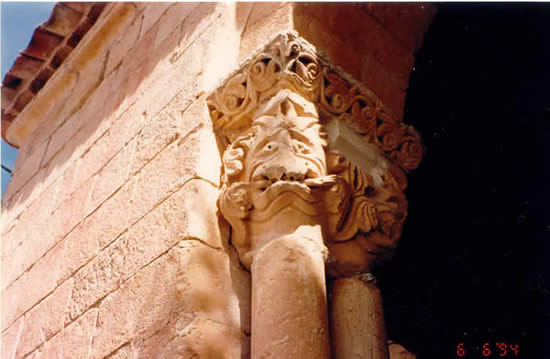Where the Roman Empire Did Not End
by L.L. Neuru
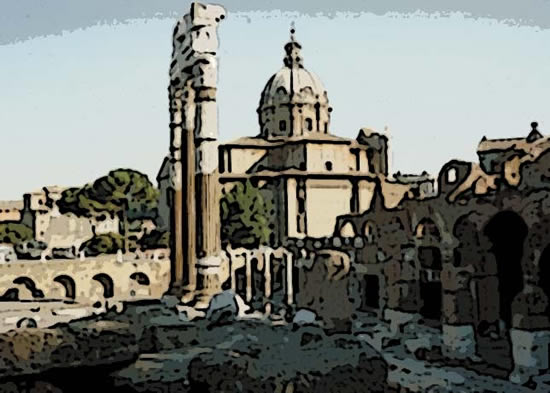
Imperial Rome certainly does not exist today. But when, where and why did it end? Many believe that Rome declined and fell, at even the early date of 431 BC: one historian claimed Roman civilization, therefore the Empire, began when Athens was fighting Sparta in the Peloponnesian War. At this point, he argued, classical civilization was obviously doomed, and it was all downhill from there. So I guess one can say he believed the Roman Empire declined and fell even before it got off to a start. The latest date I know for the political end of the Roman Empire is the 6th of August, 1806, when Napoleon forced Francis II of Austria to say that the Holy Roman Empire was at an end, and that he was no longer the Holy Roman Emperor, one of his many titles. The traditional and popularly accepted date is AD 476 when the last Western Emperor, Romulus Augustulus was booted from the throne of Rome in Ravenna sometime between 31 August and 4 September, AD 476. Ravenna? What happened to Rome? Wasn't it the capitol? Not really. To be sure, its Senate, aristocrats, the culture and the art commanded tremendous respect but but the administrative capitol had moved to the very defensible city of Ravenna on the Adriatic Sea, and it was here the western Roman Empire had its political end. Western Roman Empire? Yes, there was from AD 395 a separate Eastern Roman Empire, later to be called the Byzantine Empire, which itself continued to AD 1453 when it fell to the Turks.
Where The Western Roman Empire Did Not End
Despite the toppling of the last Emperor Romulus Augustulus (who was actually the son of Attila the Hun’s secretary and not very Roman at all!) it caused little immediate stir in the vast and sleepy old Empire. No one went downtown to the local taberna for a glass of wine and chat with friends and said to one of them, “Hi! Did you hear the Roman Empire ended yesterday?” and his friend did not reply, “Yeah. Too bad about that. I guess we’re in the Middle Ages now!” Medieval, Middle Ages, early and late Empire...all these are modern historians’ term and as convenient as they are for dividing up things to study, they meant nothing at all to the people of the time. It took centuries for Rome to disappear, and every student of classics knows Rome is still all around us, in derivatives in our languages, in art and architecture and in many legal, administrative and social institutions.
Romanesque Churches
The Empire was still going strong in the 12th and 13th centuries when it came to architecture and decoration of, for example, churches. In fact, the name of one popular style, Romanesque, says it all! These were constructed all over the western Empire, and were modelled on the standard Roman basilica, a rectangular building used for meeting halls, government, professional and corporate offices. Before the Christians took it over, it had acquired a semi-circular apse at one end. Whereas the Roman building had been large, the Romanesque church building could be much smaller.

Romanesque church, back view with apse. Many of these churches acquired a square tower at the front.
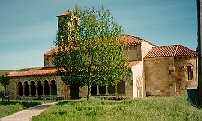
The Romanesque church had often a porch on one side and a main door into the interior. The church porch had a very public function: it gave a home to the homeless.
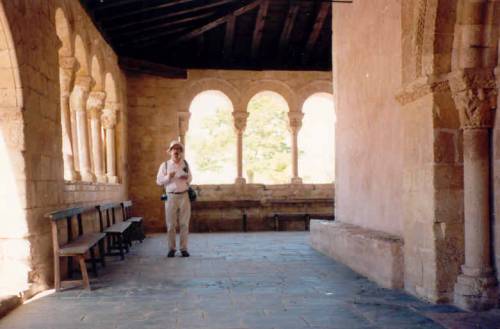
The porches were not large (note scale figure in porch above) and were open to the elements. In winter makeshift protection was put up in the open arcade, but it was doubtless ineffective. The porch was home to drunks, outlaws, homeless families with children and other generally unsavoury persons. It was considered to be a very dangerous place for young girls.


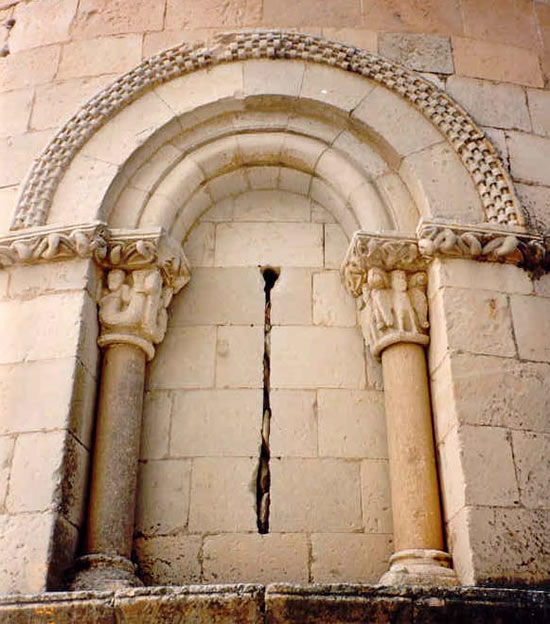
Besides the now often smaller size, and the homeless population, there were several other differences, reflective of the sometimes turbulent times of the Middle Ages. These churches had arrow slits: visible on the back of the apse in the 1st (left) illustration are tiny blind (filled in) windows. These are perfect for firing a volley of arrows without getting shot back (we hope). The arrow slits were 'guarded' often by creatures from Greek and Roman myth (as well as local fantastic ones) atop the capitols. The centre shows a close-up of the right apse window and its left capitol has sea serpents with human heads and the right an animal somewhat resembling a seated dog with wings and a human head. These fantastic creatures were meant to represent the forces of evil and were suitable in their place to ward off marauders.
Kings and Queens ruled more and more the areas of the old Empire and became as familiar as the Emperor himself . Like the Roman Emperors, they portrayed themselves closely associated with God (now the Christian God), and they portrayed persons of the Bible as Kings and Queens.

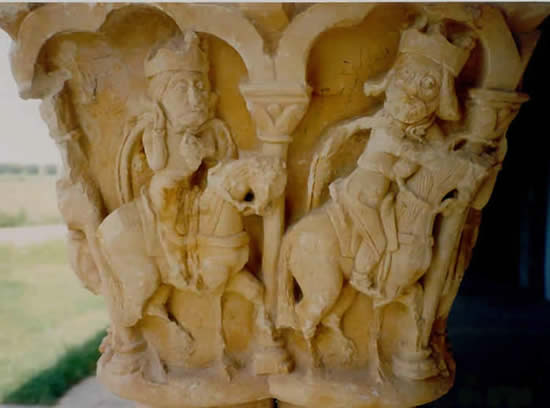
The Virgin Mary, with Queen's crown, holds an infant Jesus and is visited by one of the Three Kings on a capitol of a Romanesque church. The 2nd and 3rd King ride around the other side of the column.
The churches were decorated with sculpture; in a world where few now could read these carvings served to remind people of their lessons and served as a sort of school. Education, so prized by the Romans, had suffered badly in the turbulent medieval period and took many centuries to be even somewhat as available as it had been under the Romans.
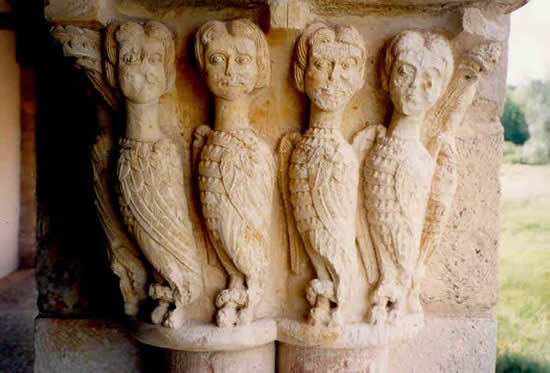
The non-human images of antiquity represented sin; indeed some of them already were considered dangerous forces to the Greeks and Romans. The Sirens, for example, became more and more symbolic of the evils of sex, whereas they had been in Homer, simply melodious, hungry and enjoyed a tasty human. Today siren tends to mean a female lecher as well as the noise emitted by emergency vehicles.
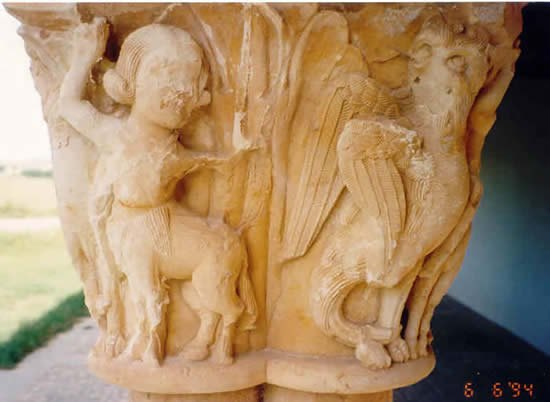
Centaurs were always uncouth (remember the Lapiths’ wedding party), except for Cheiron, and were known for violence, which could include sexual transgress. In this capitol, the centaur has acquired a neat medieval page’s hairdo. He is accompanied by a winged griffin-derivative creature with tail and claws.
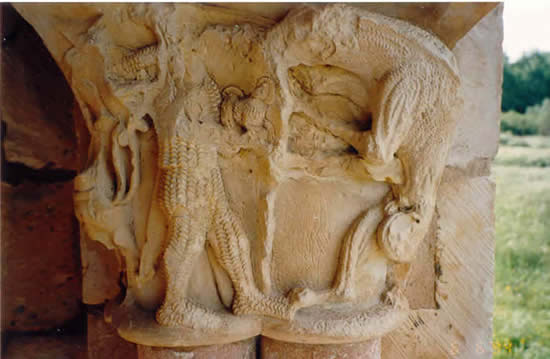
Along with classical and Christian images there are also local heros: here a chain-mail clad knight fights what appears to be a dragon. The scales are represented in much the same way as the chain-mail. The hero will hopefully triumph over the force of evil soon.

Local people, usually officials, were represented on churches also. This was perhaps a reward for donating money for the building. This was a standard practice in antiquity, and still is, to commemmorate the gift of an individual on the building itself.
The gentleman is wearing a very medieval-loking hat, but his drapery is more than a little reminiscent of the old Roman toga. The office of consul went on for many centuries in the eastern Empire; the title was not used in the western provinces for officials, but the trappings of officialdom were cheerfully displayed. The capitol has a series of classical-style rosettes above the official.

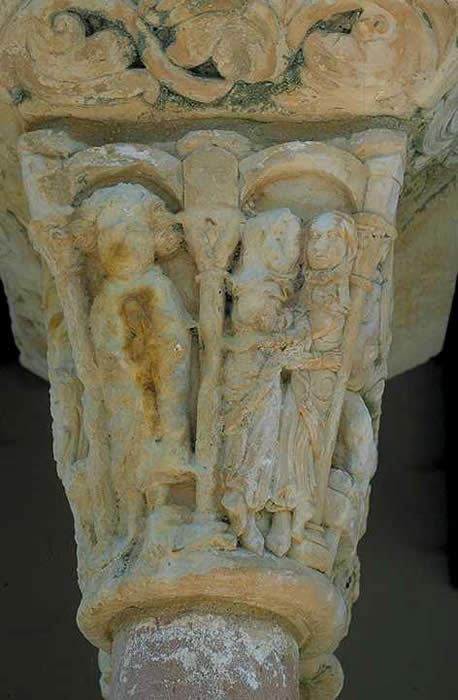
Some locals just appear to be sitting and thinking, such as the chap on the left of the left column and others just standing around as members of a crowd. The character to the right is wearing a paenula, a hooded cloak, which had been standard garb for the Roman centuries for out-of-doors wear. This is undoubtedly a medieval peasant, perhaps even a serf, and his life probably hadn’t changed much at all since Roman times. On the column to the right, 2 women are chatting.
Many of the images were quite rude, such as the chap giving passers-by a large raspberry. His capitol is topped with swirling grape (?) leaves, very much like the ones on classical buidings. Other images were overtly sexual, kinky, even anatomically impossible (and will not appear here). The intent was to illustrate the horrors of sin, all the things you weren’t supposed to do, and juxtaposed were the images of virtue, such as kings, angels, Mary and Jesus and so on. Classical imagery inherited from Rome was consciously used to represent both good and bad and also shows up in the clothing, architecture and general decoration in these buildings.
